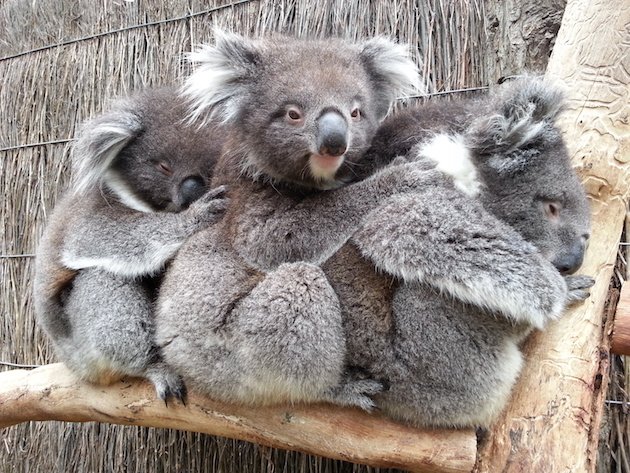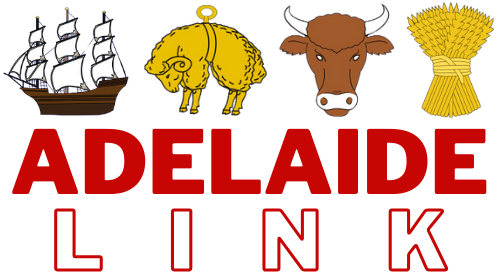Exploring the Diverse Wildlife in Adelaide: A Natural Wonderland
5 months ago

Adelaide, the capital city of South Australia, is not only celebrated for its vibrant culture and exquisite food but also for its astonishing range of wildlife in Adelaide. With a diverse ecosystem that includes coastal regions, wetlands, and the Adelaide Hills, this city offers residents and visitors an unparalleled opportunity to connect with nature. The city is surrounded by remarkable parks, reserves, and wildlife sanctuaries that are home to numerous species of flora and fauna. This article aims to dive deep into the unique wildlife that inhabits Adelaide and explore the various settings where one can experience these enchanting creatures up close.
The city’s wildlife is not limited to the urban areas. The surrounding regions abound with native species, many of which are endemic to Australia. From kangaroos grazing peacefully in the Adelaide Hills to the mesmerizing birds that inhabit the wetlands, the wildlife in Adelaide serves as an essential reminder of the region's natural heritage. Furthermore, conservation efforts are thoughtful responses to habitat loss and climate change, highlighting the importance of protecting these species for future generations. In this article, we will cover the different types of wildlife found in and around Adelaide, including notable species, their habitats, and the best places to observe them.
The Unique Fauna of Adelaide
Adelaide is home to an array of unique fauna that represents the rich biodiversity of Australia. The region’s wildlife includes iconic marsupials, reptiles, and a plethora of bird species, all thriving in their respective habitats. One cannot mention the wildlife in Adelaide without highlighting the kangaroo, Australia's most famous marsupial. Macropus rufus, commonly known as the red kangaroo, is frequently spotted in the Adelaide Hills. These gentle animals can often be seen hopping through the grasslands, especially at dusk when they are most active.
Another prominent resident of the region is the Australian koala, known for their endearing appearance and laid-back lifestyle. These tree-dwelling marsupials feed primarily on eucalyptus leaves and are a major attraction for visitors to the Adelaide Zoo and Cleland Wildlife Park. It is crucial to recognize the conservation efforts aimed at protecting the koala population, as they face threats from habitat loss and climate change. Observing these creatures in their natural habitat adds immense value to the experience of exploring the wildlife in Adelaide.
Bird Species to Spot in Adelaide
The birdlife in Adelaide is another highlight for nature enthusiasts, offering some of the best bird-watching experiences in Australia. The city attracts numerous migratory species, making it a prime location for ornithologists and hobbyists alike. Adelaide's wetlands, such as the Adelaide International Bird Sanctuary, are perfect for spotting a variety of waterfowl, including pelicans, swans, and various species of ducks. Bird watchers can also observe shy and elusive species like the Australian bittern and the black-tailed native hen, both of which thrive in these wetland environments.
For those wanting to experience more terrestrial birds, the Adelaide Hills are teeming with vibrant avian life. You can witness the colorful crimson rosella and the majestic wedge-tailed eagle soaring high above the rolling hills. The diverse habitats of the region provide ample opportunities for bird watchers to spot various species, including honeyeaters, warblers, and the enchanting lyrebird with its dramatic courtship display. Visiting local parks, such as Morialta Conservation Park or Mount Lofty, can yield sightings of these magnificent birds, showcasing just how dynamic the wildlife in Adelaide can be.
Marine Life along Adelaide’s Coastline
Adelaide's coastal region is another treasure trove of biodiversity, offering unique opportunities to observe marine life. The waters off the coast are home to a wide variety of species, including dolphins, seals, and an array of fish. The gulf waters, particularly near areas like Glenelg and Port Noarlunga, are well-known for dolphin sightings. Bottlenose dolphins can often be spotted frolicking in the waves, creating a magical experience for beachgoers and ocean lovers alike. Several tour operators provide dedicated dolphin-watching excursions, giving visitors a chance to get up close and personal with these charismatic creatures.
Reptiles and Amphibians of Adelaide
While the mammals and birds typically steal the spotlight when discussing the wildlife in Adelaide, the reptiles and amphibians of the region play an equally vital role in maintaining ecological balance. The city's proximity to diverse habitats supports a variety of reptiles, including snakes, lizards, and even the rare and elusive sea turtle. The blue-tongue skink, known for its distinctive blue tongue and docile nature, is a common sight in gardens and scrubland. These reptiles contribute to the ecosystem by controlling insect populations, acting as both predator and prey.
Adelaide is also home to several snake species, including the eastern brown snake and the black tiger snake. While these reptiles can be dangerous, they play an important role in controlling the pest population and should be respected and protected. Additionally, the region hosts a vibrant selection of frogs and toads, with many species found across local wetlands. The call of the eastern banjo frog is a beautiful sound that indicates the arrival of rain, emphasizing the interconnectedness of wildlife in the ecosystem and the importance of amphibians as environmental indicators. Overall, the presence of these reptiles and amphibians showcases the remarkable biodiversity of the wildlife in Adelaide.
Conservation Efforts and Their Importance
Conserving wildlife and natural habitats is essential in a rapidly urbanizing world, and Adelaide is no exception. The integration of wildlife conservation initiatives within urban planning has been a focal point in maintaining biodiversity in the region. Organizations like the Adelaide and Mount Lofty Ranges Natural Resources Management Board play a significant role in habitat restoration projects, species monitoring, and raising public awareness about the importance of protecting the local environment.
Moreover, several wildlife sanctuaries and parks within and surrounding Adelaide are dedicated to rehabilitation and care for injured wildlife. Cleland Wildlife Park and the Adelaide Zoo engage in breeding programs for endangered species, aiming not only to educate the public but also to contribute to global conservation efforts. These institutions offer opportunities for individuals to learn more about the challenges faced by wildlife in their natural habitats while providing the public with avenues to contribute to local conservation initiatives. Engaging the community in various programs can create awareness around the importance of protecting the wildlife in Adelaide and promoting coexistence between urban life and nature.
The Role of Education and Community Involvement
The role of education in raising awareness about native wildlife and conservation efforts cannot be understated. Various community programs and workshops focusing on wildlife education have been implemented in schools and local organizations across Adelaide. These programs not only aim to enlighten young minds about the local ecosystems but also inspire the next generation of conservationists. By fostering a connection between children and the wildlife in Adelaide, we can instill a sense of responsibility toward preserving the biodiversity that enriches our lives.
Additionally, volunteer opportunities in conservation programs allow community members to take an active role in protecting their local environment. Initiatives such as tree-planting days, coastal clean-ups, and habitat restoration projects encourage people to engage with nature while actively contributing to the wellbeing of their ecosystems. The involvement of local communities in conservation efforts creates a sense of ownership and pride in one's natural resources, emphasizing the importance of collective action in ensuring a thriving habitat for Adelaide's wildlife.
Where to Experience Wildlife in Adelaide
Adelaide offers numerous opportunities for wildlife enthusiasts to immerse themselves in nature and observe various species in their natural habitats. Some of the most prominent locations include national parks, wildlife parks, and coastal reserves, all of which provide unique opportunities to experience the rich biodiversity of the region. One of the must-visit places is the Cleland Wildlife Park, an interactive park where visitors can get up close with kangaroos, koalas, and other native animals. This park allows guests to feed kangaroos and even take photographs with koalas, making it a popular choice for families and tourists.
The Adelaide Zoo, established in 1883, is another excellent destination for experiencing the wildlife in Adelaide. It is home to over 2,500 animals, including several endangered species, and offers educational programs aimed at promoting conservation awareness. Additionally, various exhibits showcase Australian wildlife, making the zoo an excellent choice for both locals and visitors to learn more about their native fauna.
Exploring Natural Reserves and National Parks
The region's natural reserves and national parks provide stunning locations to appreciate Adelaide's wildlife in their natural settings. Parks such as Morialta Conservation Park and Belair National Park boast extensive hiking trails where visitors can encounter kangaroos, wallabies, and an array of bird species. The scenic views and natural beauty create opportunities for outdoor enthusiasts to connect with nature and experience the tranquility that the Australian bush offers. Guided tours and eco-walks within these parks allow visitors to discover hidden gems and learn about the diverse ecosystems that thrive within Australia.
For those seeking coastal experiences, ventures to areas like the Adelaide International Bird Sanctuary or the Onkaparinga National Park can yield sightings of unique bird species and marine life. The biodiversity of these coastal and riverine environments not only captivates wildlife observers but acts as a reminder of the importance of preserving these delicate ecosystems for future generations. The beauty and allure of the wildlife in Adelaide serve as a testament to the need for ongoing conservation initiatives and responsible stewardship of our natural heritage.
Tips for Responsible Wildlife Observation
As passionate wildlife enthusiasts and advocates, it is essential to practice responsible wildlife observation to ensure the protection of our natural habitats and the creatures that inhabit them. Here are some valuable tips to keep in mind during your wildlife adventures in Adelaide. Firstly, always maintain a respectful distance from the animals. While it can be tempting to get close for a photograph or a better view, encroaching on their personal space can cause stress or lead them to flee their natural habitats. Observing wildlife from a distance not only minimizes their disturbance but also allows for more natural behaviors to unfold.
Additionally, be aware of the environmental impact of your actions while visiting parks and reserves. Stay on designated trails to prevent damaging native flora and fauna, and never feed wild animals. Feeding wildlife can lead to unnatural behaviors and dependency on humans for food, ultimately jeopardizing their ability to survive independently. Instead, enjoy observing their natural foraging behaviors and appreciate the beauty of their existence in the wild.
Engaging with Local Conservation Initiatives
Joining or supporting local conservation initiatives not only enriches your experience of the wildlife in Adelaide but also contributes to the ongoing efforts to protect the region's ecosystem. Whether through volunteering for habitat restoration projects, participating in educational workshops, or donating to conservation organizations, every little effort counts and helps make a difference. Engaging with the community opens doors to valuable information about local wildlife and insight into the important work being done to preserve these unique habitats.
Adelaide boasts an impressive and diverse array of wildlife, showcasing the unique natural heritage of Australia. From the iconic kangaroos and koalas to the enticing birdlife and marine environments, the wildlife in Adelaide provides a captivating playground for nature lovers. As we navigate modern urban living, it is crucial to recognize the importance of preserving these unique ecosystems and engage with them responsibly. Educational programs, conservation initiatives, and active community involvement are integral to fostering a connection between people and nature, ensuring the vitality of Adelaide’s wildlife for generations to come. Thus, by exploring and appreciating the natural wonders that Adelaide has to offer, we honor the diversity of life that coexists with us in this vibrant region.

Leave a Reply